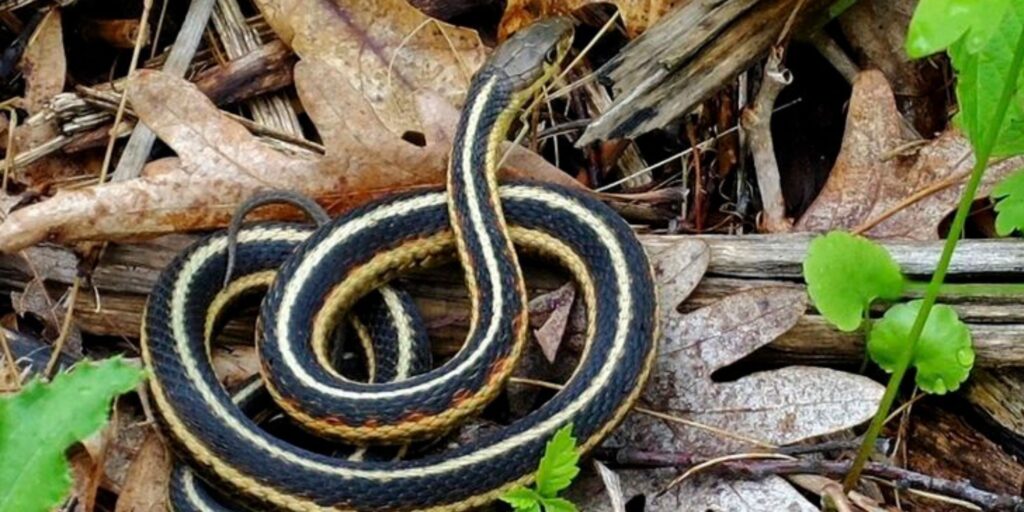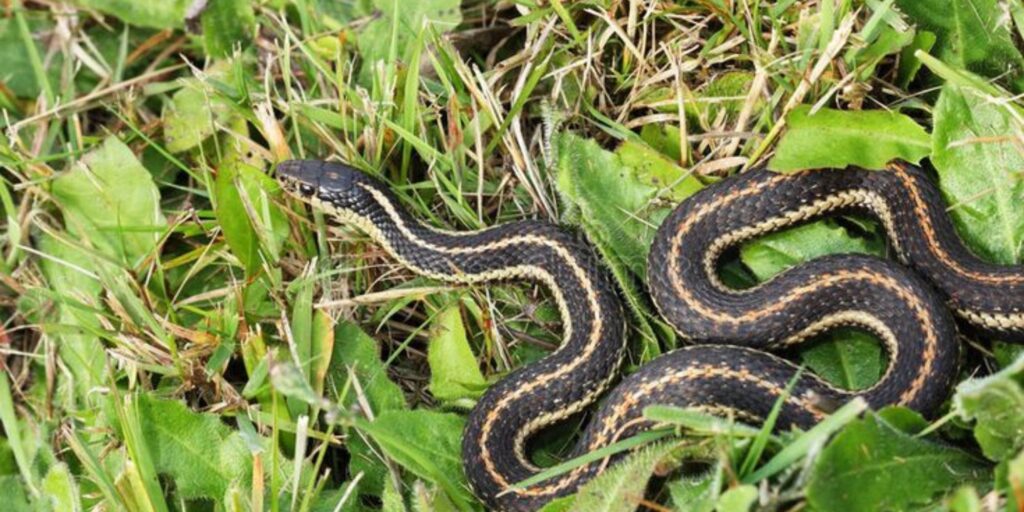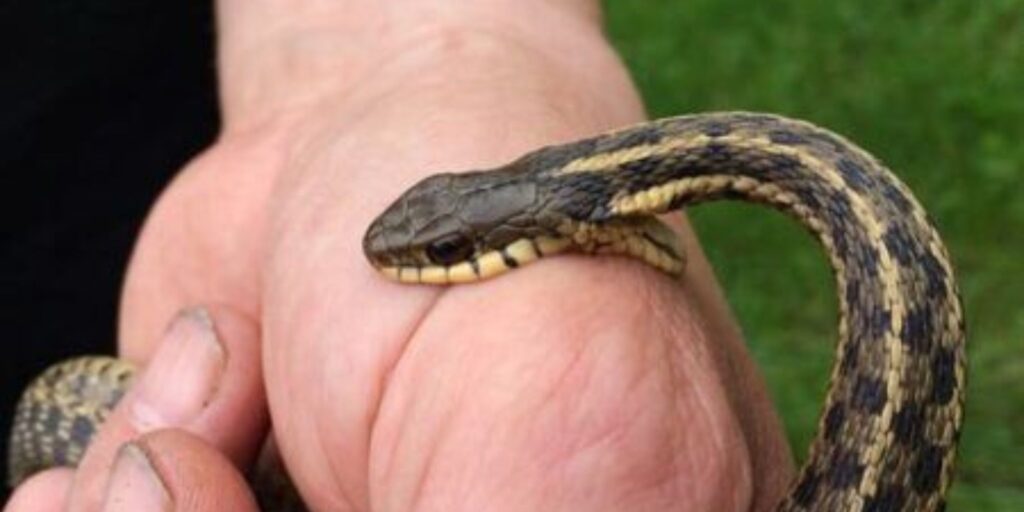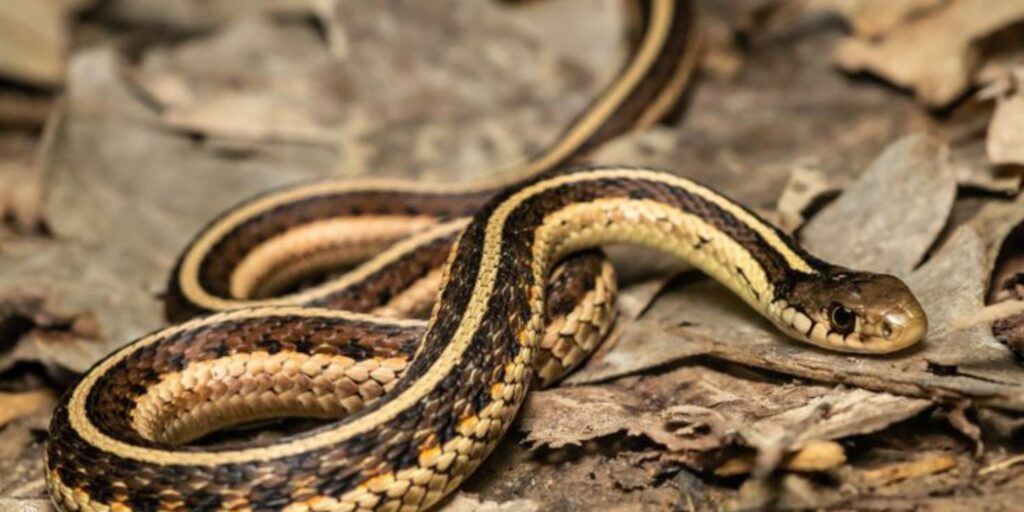Introduction
Garter Snake Bite encountering a snake in the wild can be an adrenaline-pumping experience. But what happens if that encounter turns into a bite? Garter snakes, often seen slithering through gardens and parks, are typically harmless. However, any snake bite can provoke fear and confusion. If you’ve been bitten by one of these slender reptiles, it’s essential to know your next steps.
In this guide, we’ll walk you through everything you need to do after a garter snake bite—from understanding their venomous nature to seeking medical help and how to prevent future encounters. Whether you’re an outdoor enthusiast or just enjoy spending time in your backyard, being prepared is key. Let’s dive into the details so you can handle this situation calmly and effectively!
What to Do If You Get Bitten by a Garter Snake: A Step-by-Step Guide

Getting bitten by a garter snake can be surprising, but remaining calm is crucial. Your immediate reaction sets the tone for how you’ll handle the situation. Take a deep breath and assess your surroundings to ensure there are no further threats.
First, take a look at the bite itself. Garter snakes typically have small teeth that may leave minor puncture wounds. If you see bleeding, gently clean the area with soap and water to reduce the risk of infection.
Next, apply pressure with a clean cloth or bandage to control any bleeding. It’s important not to use excessive force; just enough to stop the blood flow should suffice. Elevate the affected limb if possible—it can help minimize swelling.
Monitor yourself for signs of allergic reactions or other symptoms like nausea or dizziness. While garter snakes are non-venomous, some individuals might experience mild reactions due to anxiety or even from previous encounters with snakes in general.
If you’re feeling unwell after being bitten—especially if it affects breathing—seeking medical assistance is vital. Call 911 or head directly to an urgent care facility as soon as possible for evaluation and treatment options.
Keep track of when and where you were bitten so you can provide accurate information if needed during your medical visit. A detailed description helps healthcare providers offer appropriate care without unnecessary procedures.
Stay still while waiting for help or until you’ve assessed your condition thoroughly. Moving around too much can increase heart rate and potentially worsen any swelling or pain in the affected area.
Are Garter Snakes Poisonous?

Garter Snakes Bite are among the most common and widely distributed snakes in North America. If you encounter one, it’s natural to wonder about its safety. Are they poisonous? The simple answer is no—garter snakes are not venomous to humans.
These slender reptiles belong to the genus Thamnophis and have a reputation for being relatively harmless. They primarily feed on small prey like amphibians, earthworms, and sometimes fish. Their diet doesn’t include anything dangerous or aggressive toward larger animals.
While Garter Snake Bite do produce a mild toxin, it’s important to know that this substance is not harmful to humans. Their saliva contains proteins that can help subdue smaller prey but pose little risk if a human gets bitten. Most bites from garter snakes result in minor wounds rather than serious medical issues.
If you’re bitten by a garter snake, chances are it will feel more alarming than painful. These encounters often lead to some swelling or redness at the bite site, which usually resolves quickly without needing extensive treatment.
So why do people think they might be dangerous? Many myths surround these creatures due largely to their resemblance with other snake species that can be venomous. Garter snakes also tend to hiss or strike when threatened as part of their defense mechanism.
Still worried about an encounter? Understanding how these beautiful creatures behave can ease your concerns significantly. They’re typically shy and prefer avoiding humans whenever possible.
When enjoying nature where these snakes live, remember: stay calm if you see one! Knowing that they aren’t venomous allows for a better appreciation of this fascinating part of our ecosystem without unnecessary fear.
How to Handle a Garter Snake Encounter
Encountering a Garter Snake Bite can be a surprise. These snakes are generally harmless and often shy, but knowing how to handle the situation is important for both your safety and the snake’s well-being.
First, take a deep breath. Garter snakes are not aggressive creatures; they would rather flee than fight. If you spot one in your yard or on a hiking trail, stay calm. Panicking may provoke the snake or lead to accidental injuries if you try to rush away.
Observe from a safe distance. Watching their behavior can give you insight into how they’re feeling. If it appears agitated—such as coiling its body or hissing—you might want to back off slowly without startling it further.
If you’re nearby and need to pass by, do so carefully. Give the snake plenty of space while moving around it. Snakes have poor eyesight but excellent senses for vibrations; making sudden movements could startle them.
Avoid trying to catch or handle a garter snake unless necessary. Many people find themselves bitten when attempting this feat out of curiosity or fearlessness. Remember that bites from these non-venomous snakes usually result in minor injuries at worst—but it’s best not to risk getting nipped at all.
If you’re with children during this encounter, instruct them on what’s happening calmly and clearly. Encourage them not to poke at or chase after the snake—this only increases tension for everyone involved.
Take note of where you’ve seen the snake before leaving the area—it may help you identify potential habitats later on should another encounter arise! By respecting their territory, you’ll ensure both parties remain unharmed while enjoying nature together.
Seeking Medical Help After a Garter Snake Bite

If a garter snake bites you, stay calm and assess the situation. These snakes are generally non-venomous and pose little threat to humans, but any bite can lead to unexpected complications. It’s wise to seek medical attention.
First, wash the bite area with soap and water. This step helps prevent infection from bacteria that could enter through the wound. Garter snakes Bite have small teeth that may break the skin, but they typically don’t inject venom like more dangerous species.
After cleaning the area, apply a clean bandage if necessary. Keep an eye on your symptoms, watching for changes like swelling or redness at the bite site. If you notice increased pain or unusual reactions, contact a healthcare provider right away.
Even though most garter snake bites aren’t serious, some people may experience allergic reactions or heightened sensitivity due to anxiety about snakes. It’s not uncommon to feel faint or dizzy after realizing what happened.
When you seek medical help, give clear information about how and when the bite occurred. This allows healthcare professionals to evaluate your condition more accurately. Be prepared to answer questions about any previous encounters with snakes and any allergies you might have.
In many cases, doctors will monitor the injury for signs of infection over time. They may recommend further treatment based on your symptoms.
Remember, even though garter snake bites usually require minimal treatment, it’s always better to be cautious when dealing with injuries from wildlife encounters.
Preventing Future Snake Encounters
When it comes to enjoying the great outdoors, it’s essential to take measures that minimize the chances of an unexpected encounter with snakes, including garter snakes. These creatures often inhabit gardens, wooded areas, and near bodies of water. Being proactive can make your outdoor experience more pleasant and safer.
Start by making your yard less inviting for snakes. Keep grass trimmed short and remove dense brush or debris where they might hide. If you have a garden, consider using barriers like fencing or raised beds to deter them from slithering in.
Awareness is key when hiking or walking in nature. Stay on marked trails as much as possible; this reduces your chance of stepping on or startling a snake hidden in tall grass. Move cautiously through rocky areas and be mindful of logs or other structures where snakes may reside.
Wear appropriate footwear if you’re walking through potentially snake-infested regions. Sturdy boots can provide added protection should you accidentally step too close to one of these reptiles.
Educate yourself about local wildlife before heading out on adventures. Understanding which species are common in your area will help you react appropriately if you encounter any during hikes or camping trips.
If you’re particularly concerned about snake encounters while gardening or landscaping, consider wearing protective clothing such as long pants and gloves. This extra layer offers peace of mind while working at ground level.
By taking these preventive steps, you’ll not only enhance your enjoyment of outdoor activities but also reduce the likelihood of unwanted encounters with garter snakes—or any other type—keeping both parties safe in their respective habitats.



